Apple is investigating the use of bayonet lens mounts — one of the most common lens attachment mechanisms used in modern photography — in its iOS device lineup, suggesting the company is mulling interchangeable lens accessories for its iOS device lineup.
An Apple patent issued by the U.S. Patent and Trademark Office on Tuesday describes a mechanism by which an iOS device, such as an iPhone or iPod, may be fitted with a bayonet mount onto which various lens types can be fastened.
As noted in Apple's U.S. Patent No. 8,687,299 for "Bayonet attachment mechanisms," the bayonet mount is both utile and aesthetically pleasing, two attributes paramount in any Apple product design. The mount correctly aligns and securely attaches lenses to a device body while keeping a relatively inconspicuous profile when not in use.
Source: USPTOApple notes that other mount types, such as cases with built-in screw mounts, alter the overall design of a device and are therefore undesirable from a consumer's perspective. Magnetic mounts can be disguised, but the method is not as secure as a physical interlock and may result in misaligned lenses.
Instead, Apple proposes a bayonet-style solution integrated with a device's rear-facing camera bezel. As seen above, the iPhone-side bayonets are substantially hidden within the camera surround, which would protrude slightly above the rear case. A lens element with interleaving bayonets can be aligned via a guide dot and rotated until a secure interference hold is achieved.
Detents and inserts are disposed within the bayonet mechanism to provide an increasingly tight torque lock when rotating in a certain direction. Detents on the first attachment mechanism (located on the device) force a second attachment mechanism (located on the lens) outward radially against a compliance member. As the second attachment plates are pushed outward, gaps form between the bayonets until the detents reach a secure configuration, at which point the plates move inward into a locked position.
Once the detents on both mechanisms are engaged, stop members halt further rotation, denoting a secure fit and preventing mechanical damage.
Due to a bayonet mount's snug fit, it might pose a risk to both device and lens if dropped from height. To prevent breakage from the transfer of force associated with a drop, the bayonet mechanism may incorporate a ramped surface that enables a lens to decouple from a device without rotating. The torque at which this decoupling occurs can be modified depending on the ramp angle and materials used.
Illustration showing decoupling of lens from device when dropped.Apple has filed similar patents in the past, including recent properties for interchangeable lenses, though Tuesday's invention is perhaps closest to something the company would potentially release. While mere conjecture, it is theoretically possible that a bayonet style mount could be added to the handset without significant cost to aesthetics.
A report in March suggested the upcoming iPhone 6 design featured a protruding rear camera much like the fifth-generation iPod nano, while a dubious rumor suggested Apple is working on an interchangeable lens system for its mobile device lineup. All current iPhone models sport a camera flush with the back case.
Apple's bayonet mount patent was first filed for in 2012 and credits Emery A. Sanford and Dominic C. Toselli as its inventors.
 Mikey Campbell
Mikey Campbell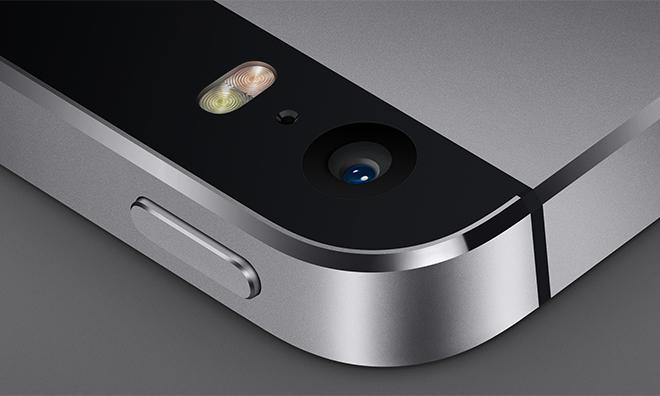

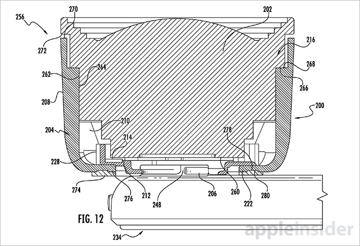
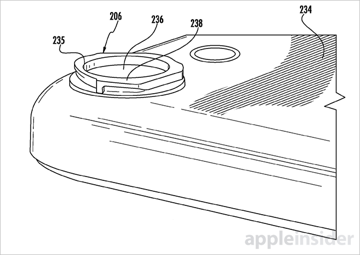
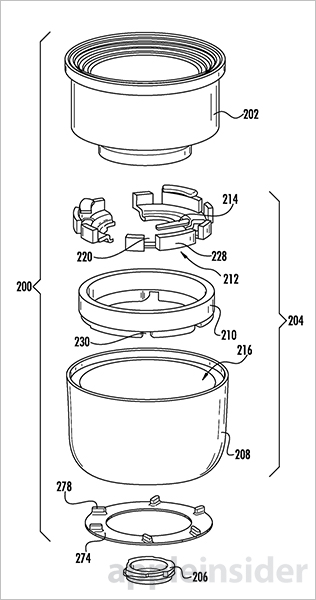

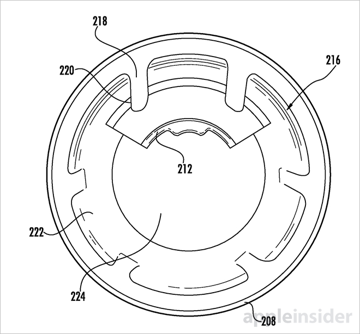
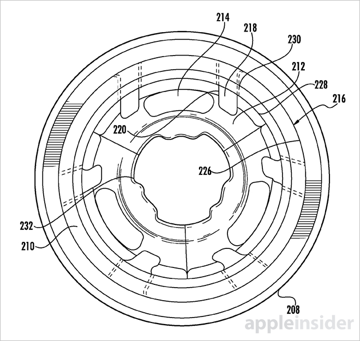







-m.jpg)






 Amber Neely
Amber Neely
 William Gallagher
William Gallagher
 Christine McKee
Christine McKee
 Andrew Orr
Andrew Orr

 Sponsored Content
Sponsored Content










23 Comments
And full manual in the iOS camera app please.
Wait, what was that earlier picture today in AI I an iPhone with a raised camera lens...? Was that a prototype?
So a iPod touch with a 5.5 inch screen which is great for gaming and a camera with interchangeable lenses. It's great that they haven't given up on iPod touch :)
Hmm this would be nice if there was a magnetic ring in the lens that lifts the bayonet up to attach the lens, but is otherwise flush with the phone. If it's protruding in any way it will be annoying and very non-Apple like. As if attaching lenses is something we would do. Where do you keep them? It would be way too easy to bend the bayonet. Lets hope this never happens..
So I also noticed that the lens they show in the drawings would actually totally cover the flash. In that rumored photo with the protruding lens people were saying there was no built-in flash shown. Way to solve both problems: The flash is in the white apple logo in the middle.